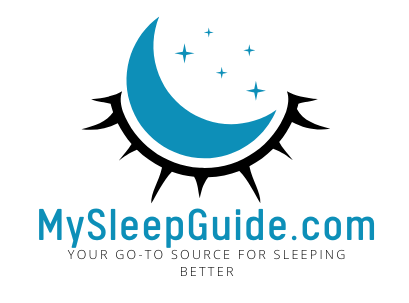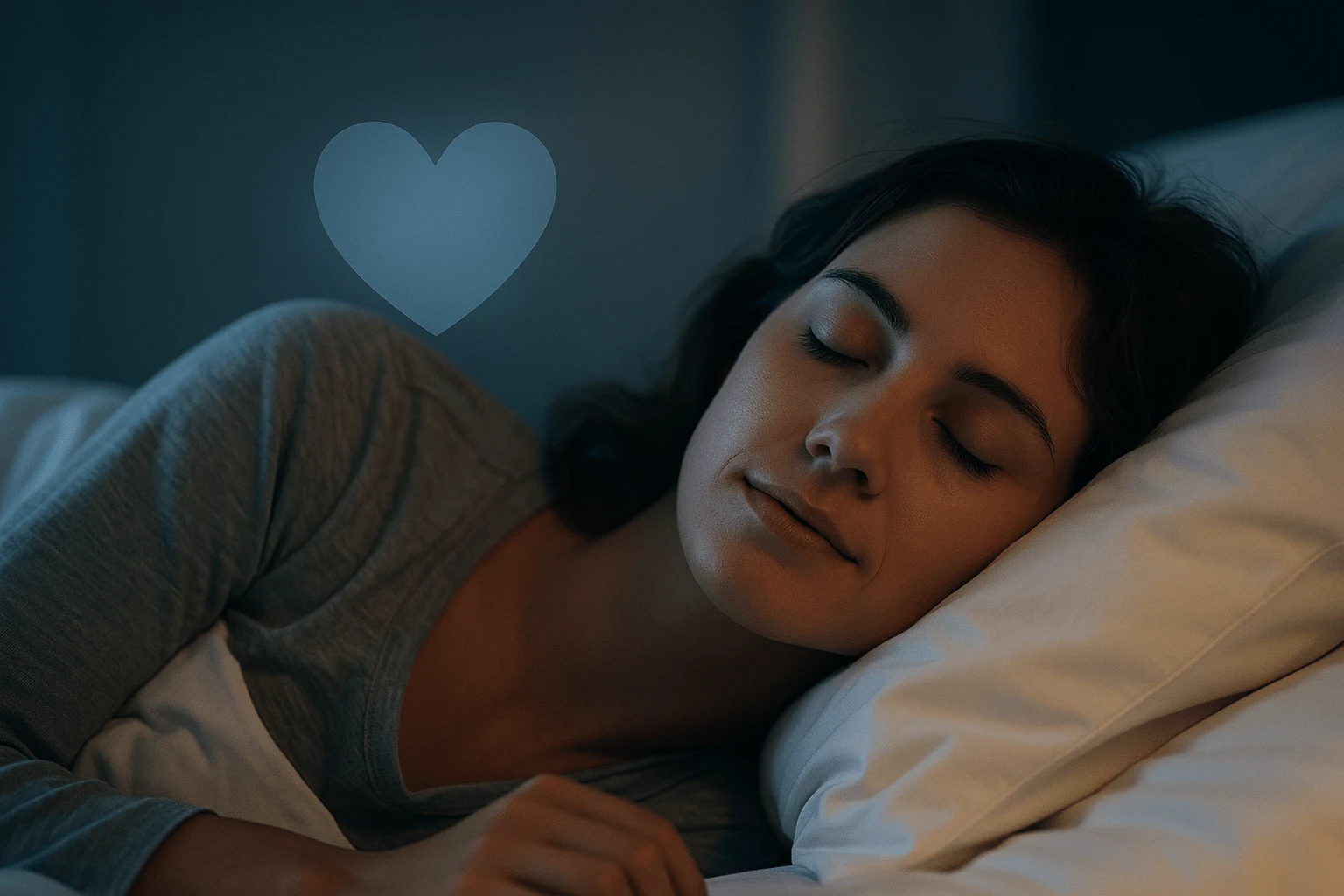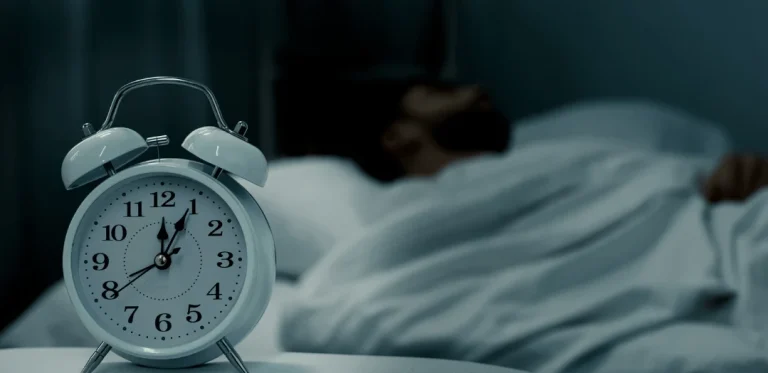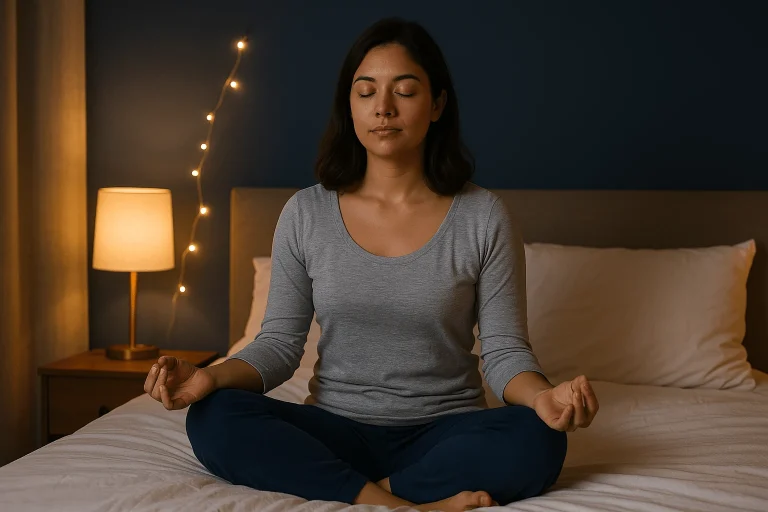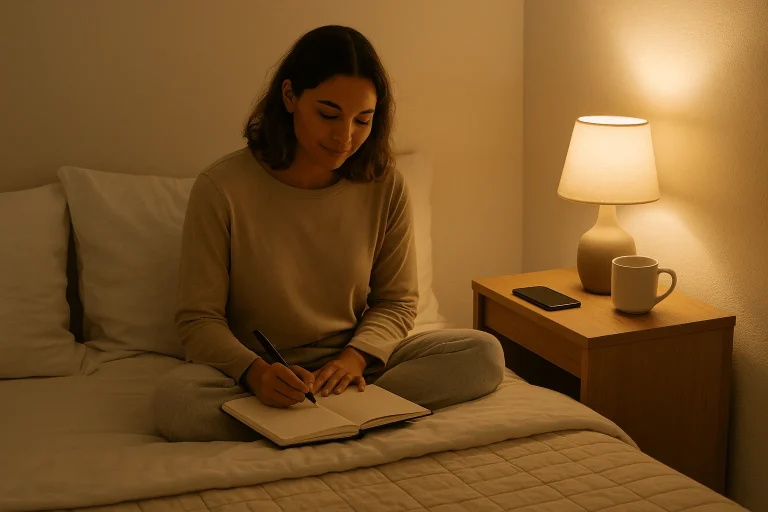How to Fall Asleep Fast: Proven Ways for Deeper, More Restful Sleep
You know that feeling when you’re exhausted but somehow, your brain didn’t get the memo? You’re lying in bed, staring at the ceiling, counting down the hours until your alarm goes off—frustrated, restless, and wondering why falling asleep feels like an impossible task.
Trust me, you’re not alone. Millions of people struggle with this every night, and I’ve been there too—tossing, turning, trying every trick in the book. But here’s the good news: falling asleep faster isn’t just wishful thinking. There are real, science-backed techniques that actually work (and no, they don’t involve counting sheep).
So, if you’re tired of being tired, let’s dive into some practical, no-nonsense strategies that can help you drift off faster—starting tonight.
Why Can’t I Fall Asleep Even When I’m Tired?
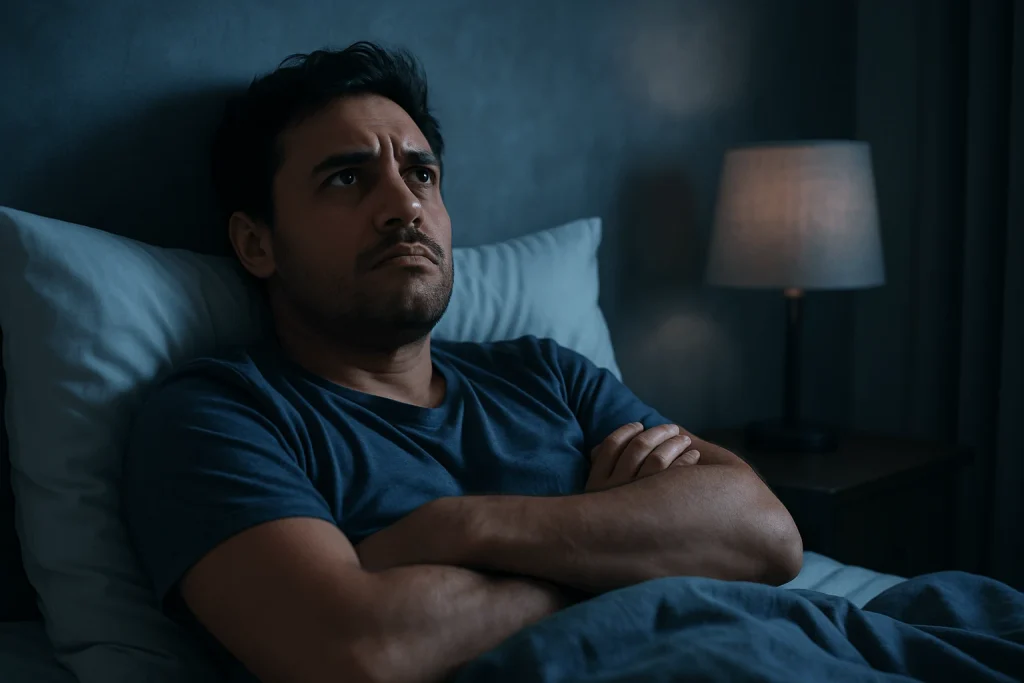
First off, let’s talk about why falling asleep can be such a pain. If you’re one of the many people who takes forever to fall asleep, you might be dealing with stress, anxiety, or maybe even some bad sleep habits (yup, those late-night Netflix binges might be contributing).
Here’s the kicker: Your body isn’t designed to just fall asleep on command. It needs time to relax, wind down, and transition into sleep. That’s why learning how to “flip the switch” is so important.
The good news is there are tried-and-tested methods to help you get there faster. And I’m not just talking about some random internet trick that might work—these are backed by experts and real science.
The Military Sleep Method: How to Fall Asleep in 20 Seconds

Sounds a little far-fetched, doesn’t it? Fall asleep in 20 seconds? But hey, there’s actually a method that military personnel use to fall asleep in minutes—and it’s worked for thousands. Developed to help soldiers catch some shut-eye quickly, this technique could work for you too.
Here’s how it works:
- Relax Your Face: Close your eyes and relax every single muscle in your face—think about releasing the tension in your jaw, your cheeks, and even your tongue.
- Drop Your Shoulders: This one’s a biggie. Let go of the tension in your shoulders, arms, and neck.
- Focus on Your Breathing: Slow, deep breaths. Make sure your stomach is rising and falling with each breath, not your chest.
- Relax Your Legs: Start from your thighs, work your way down to your feet, and imagine all that tension just melting away.
- Clear Your Mind: And here’s the trick—try to clear your mind completely. Yeah, that’s easier said than done, but just tell yourself, “Don’t think.”
- Visualize Something Calming: Picture yourself in a relaxing setting—like floating on calm water or lying under a starry sky.
It might not work the first time (and probably not in 10 seconds), but with a little practice, you could get to the point where you fall asleep faster than you ever thought possible. (Seriously, who doesn’t want that?)
4-7-8 Breathing: The Simple Exercise to Fall Asleep in 2 Minutes
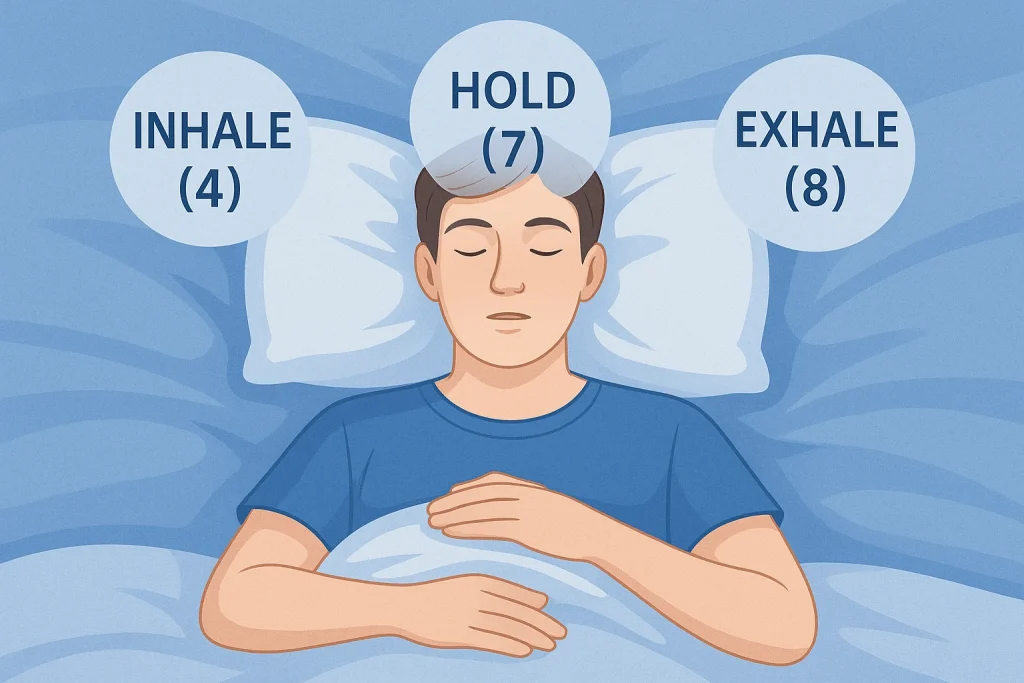
Okay, 10 seconds might be asking a lot (I get it), but here’s a much more doable technique that works for so many people: the 4-7-8 Breathing Technique. It’s simple, effective, and takes just a couple of minutes.
Here’s the breakdown:
- Exhale Completely: Let all the air out of your lungs.
- Inhale for 4 Seconds: Breathe in quietly through your nose for a count of 4.
- Hold for 7 Seconds: Hold that breath for a full 7 seconds. This is the part where your body starts to relax.
- Exhale for 8 Seconds: Now, exhale slowly through your mouth for 8 seconds—make sure to do it slowly and gently. (You want the sound to resemble a “whoosh” sound, almost like you’re sighing.)
This technique works wonders for calming your nervous system, and it’s a great way to quiet your mind when you’re lying in bed, stressing over tomorrow’s to-do list.
Pro tip: Dr. Andrew Weil, the founder of integrative medicine, swears by this technique. He calls it a “natural tranquilizer for the nervous system,” and I have to agree.
Progressive Muscle Relaxation: A Relaxation Technique to Fall Asleep Fast

If breathing techniques aren’t doing the trick for you, maybe it’s time to try something more physical. Progressive Muscle Relaxation According to one article (PMR) is a technique that focuses on relaxing each muscle group in your body, one at a time, and it’s highly effective for calming your mind and body.
Here’s how you do it:
- Start with Your Face: Tense up all the muscles in your face—scrunch up your eyes, tighten your jaw—and then release them. Let go of any tension.
- Neck and Shoulders: Tense your neck and shoulders. Hold for a few seconds, then relax.
- Arms and Hands: Tighten your arms and hands, then let go. Feel the difference?
- Chest and Stomach: Take a deep breath, tense your chest, and your stomach. Then exhale and let it go.
- Legs and Feet: Finally, tense your legs and feet, hold for a second, then release.
PMR is like a workout for your muscles—without the sweat. By systematically releasing muscle tension, you’re telling your body it’s time to relax and rest.
How to fall asleep fast in 5 minutes
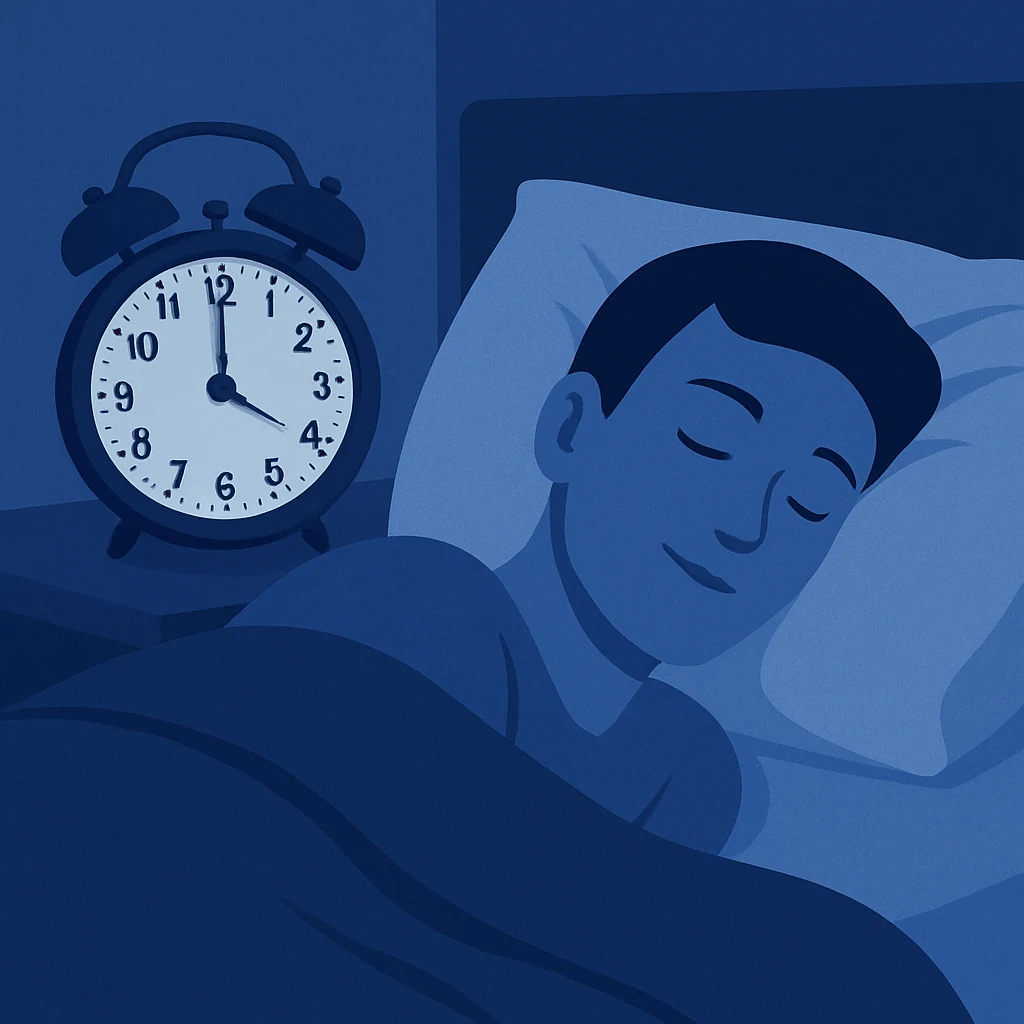
Falling asleep in five minutes might sound like a dream, but it’s totally possible with the right techniques. If you’re aiming for quick sleep, here are a few methods that can help you wind down and drift off faster:
Meditation for falling asleep fast
Meditation is a great tool for calming the mind and easing into sleep. Research shows that mindfulness-based meditation can reduce sleep issues and improve daytime function, according to a study in JAMA Internal Medicine.
If you’re new to meditation, guided sessions are a perfect place to start. These sessions lead you through relaxing mental exercises, such as visualizing peaceful settings like a quiet beach or a calm forest. As you focus on these calming images, your body relaxes, making it easier to fall asleep. Sometimes, you may even find yourself dozing off without even realizing it!
Related Post: Meditation for Better Sleep: A Simple Nighttime Routine That Works
Paradoxical intention sleep technique
This technique might seem odd at first, but hear me out: Sometimes, the pressure to fall asleep makes it even harder to do so. If you’re tossing and turning, stressing about falling asleep, the anxiety you create only adds to the problem. Paradoxical intention can help break that cycle.
The idea is simple—try to stay awake on purpose. It sounds strange, but by removing the pressure to fall asleep, you may actually find yourself drifting off naturally. Though studies show mixed results, it’s worth trying, especially if other methods haven’t worked for you. Let go of the expectation, and you may find that sleep comes more easily.
How to Create a Sleep-Friendly Environment for Deeper Rest
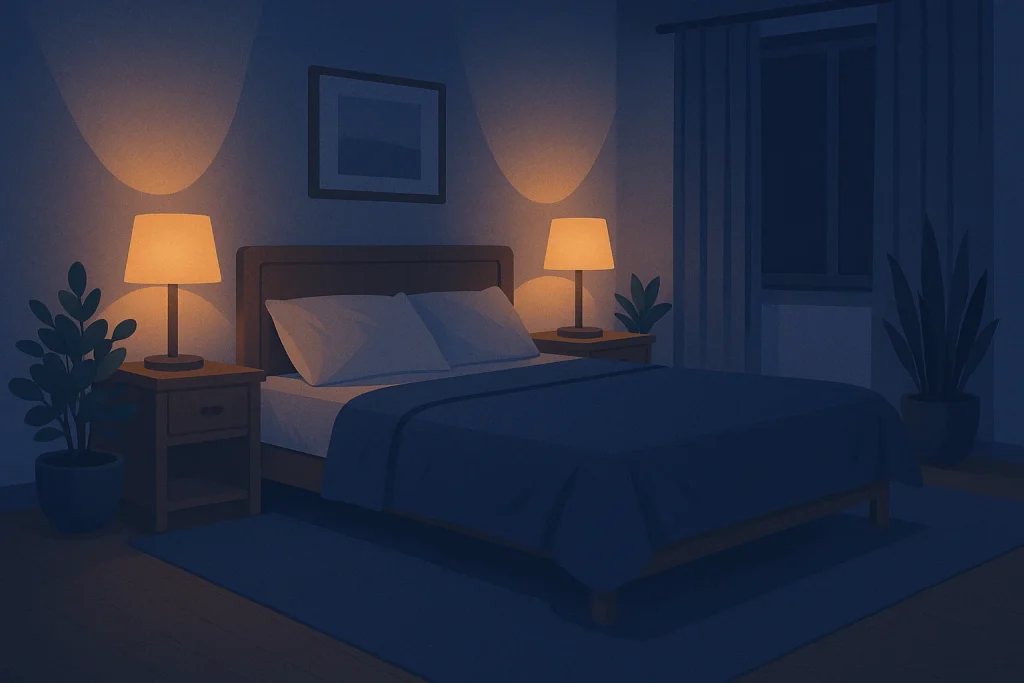
Okay, so we’ve covered some of the more popular techniques, but let’s be real: sometimes it’s the little things that make a big difference. Here are a few other ways you can speed up the process:
- Create a Sleep-Friendly Environment: Your bedroom should be a sanctuary—dark, cool, and quiet. Invest in blackout curtains, set the temperature to a cool 65°F, and make sure your bed is as comfy as possible. If noise is an issue, consider a white noise machine or earplugs.
- Ditch the Screens: Avoid screens—phones, laptops, TVs—at least 30 minutes before bed. The blue light messes with your circadian rhythm and makes it harder for your body to fall asleep.
- Avoid Stimulants and Embrace Relaxing Rituals: Cutting out caffeine and nicotine in the afternoon, along with having a cup of chamomile tea an hour before bed, can significantly improve sleep quality.
- Stick to a Routine: Consistency is key. Your body thrives on a routine, so try to go to bed and wake up at the same time every day—even on weekends.
Related Post: 7 Herbal Teas That Help You Sleep Naturally
Supplements to help with sleep

If you’re having trouble falling asleep, you might have heard that certain supplements can help. Things like melatonin, magnesium, or valerian root are popular choices for boosting sleep. But, before you start popping pills, it’s a good idea to have a chat with your doctor first—especially if you’re already on other medications or dealing with any health issues.
Supplements can be helpful, but they’re not a one-size-fits-all solution. Everyone’s body is different, so it’s important to make sure they’re a good fit for you. Your doctor can help guide you in the right direction, making sure you’re choosing something safe and effective for your specific needs.
A Beginner’s Guide to Sleep Supplements – Find the right supplement for better sleep.
How to Help Your Child Fall Asleep Fast

If your child is having trouble falling asleep, you can use many of the same techniques that help adults, just with a kid-friendly twist. Here are some things you can try to help them wind down and drift off to sleep faster:
- Get Moving During the Day: Physical activity is key! Let your child burn off energy with some fun, active play during the day. This helps them sleep soundly at night.
- Create a Relaxing Wind-Down Routine: Before bed, avoid anything too exciting or stimulating, like sugary snacks or screen time. Instead, focus on calming activities like a warm bath or soft music.
- Limit Screen Time: Screens—whether it’s TV, phones, or tablets—can really mess with a child’s ability to fall asleep. Try keeping screens away for at least an hour before bed to help them unwind.
- Try Child-Friendly Meditation: Simple breathing exercises or guided visualization can work wonders. There are tons of apps and videos specifically made for kids that lead them through relaxing techniques.
- Pre-Bedtime Bath: A warm bath can signal to your child’s body that it’s time to relax. The warmth helps calm their muscles and prepares them for sleep.
- Read a Book: A bedtime story is a great way to end the day. It gives them a sense of routine and helps them feel secure before falling asleep.
- Soothing Music: Soft, calming music can do wonders for creating a peaceful atmosphere. Try some lullabies or nature sounds to help them drift off.
- Set Up the Right Sleep Environment: Make sure the room is cool, dark, and quiet. A comfortable bed and maybe a nightlight (if needed) can go a long way in helping your little one feel cozy and safe as they fall asleep.
By incorporating these simple tricks, you can help your child develop a healthy, calming bedtime routine that makes falling asleep feel like a breeze.
Wrapping It Up
Falling asleep fast isn’t just possible—it’s within your control. With a little practice and some fine-tuning of your habits, you can train your body and mind to drift off with ease. Whether it’s the Military Method, 4-7-8 breathing, or simply optimizing your sleep environment, consistency is key.
So tonight, why not test out one of these techniques? Give it a shot and see what works for you!
Got a go-to trick for falling asleep fast? Or maybe you’ve got a unique sleep hack we haven’t mentioned? Drop a comment below—share it with us.
Frequently Asked Questions
Q: How long does it usually take to fall asleep?
It typically takes about 10-20 minutes to fall asleep. If you’re regularly lying awake for longer than that, it could mean something’s off with your bedtime routine or stress levels.
Q: Is it really possible to fall asleep in 10 seconds?
While falling asleep in exactly 10 seconds is rare, the Military Method has helped many people drift off quickly with some practice. It’s all about relaxing your body and clearing your mind.
Q: Can supplements help me fall asleep faster?
Supplements like melatonin, valerian root, or magnesium might help some people, but always check with your doctor before adding anything new. What works for one person may not work for another, so it’s worth making sure it’s right for you.
Q: What’s the best environment for sleep?
For a better night’s sleep, aim for a dark, cool, and quiet environment. Eliminate distractions (goodbye, screens!) and make sure your bed is comfy. Creating a peaceful sleep haven can make all the difference.
